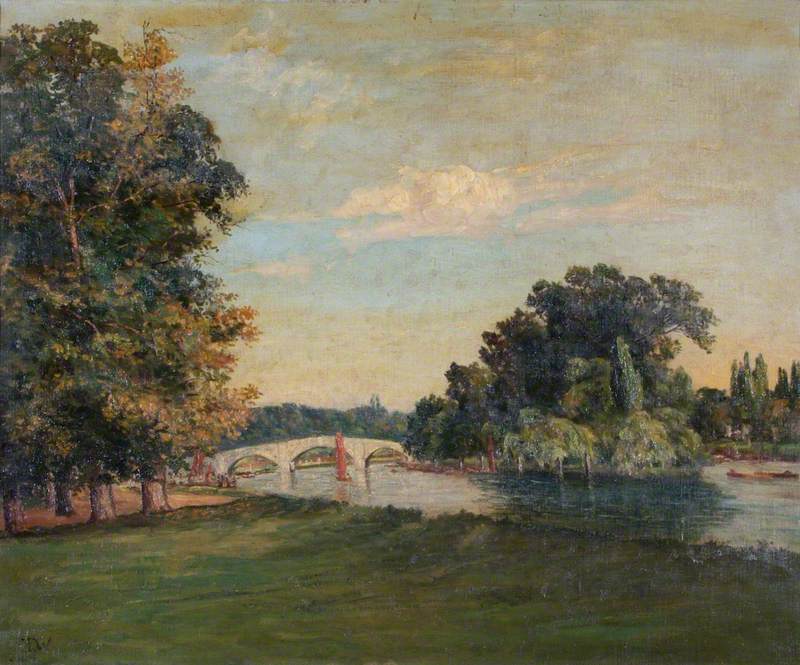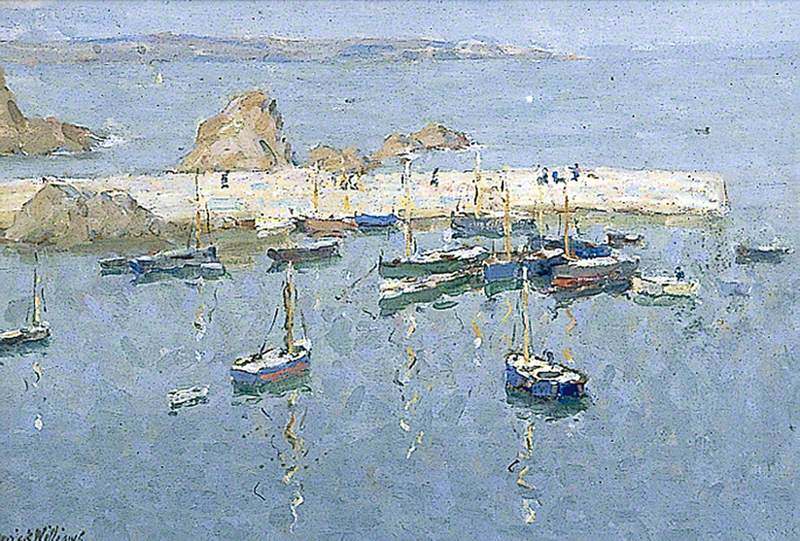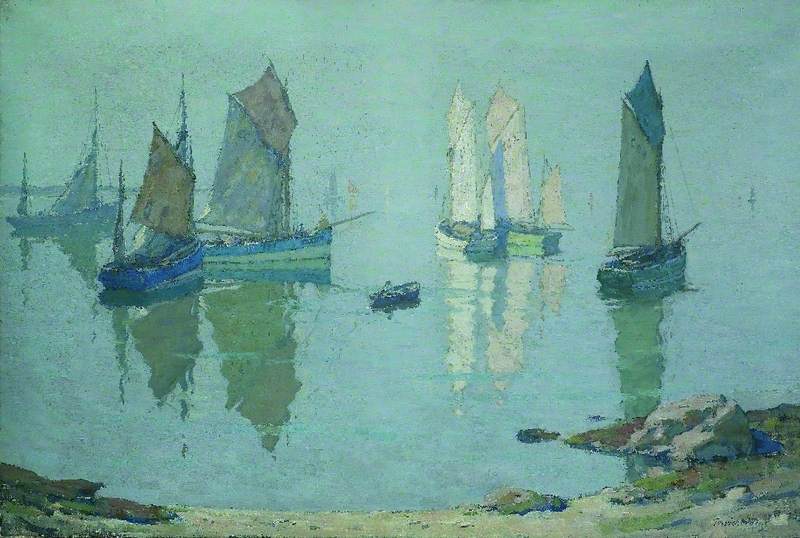
Boats in Harbour, Mevagissey 1935/1936
Terrick John Williams (1860–1936)
Leamington Spa Art Gallery & Museum
Terrick John Williams [commonly known as Terrick Williams; also known as Terrick John Williams, jnr.] was born in Liverpool, England on 20 July 1860. and was the son of Terrick John Williams (1828-1893) who was variously described in census returns as a druggist, soap maker and wholesale perfumer. It was expected that he would join the family business, however, instead, he decided to pursue a career a painter. In the 1880s he artist at the Koninklijke Academie voor Schone Kunsten in Antwerp, where he was taught by Charles Verlat. He then studied under Jean-Joseph Benjamin-Constant, William-Adolphe Bouguereau and Tony Robert-Fleury at the Académie Julian in Paris. In c.1890 he returned to England and spent some time in St. Ives, which he subsequently visited frequently but never settled there.
Williams was elected a member of the Royal Society of British Artists (RBA) in 1894; the Royal Institute of Oil Painters in 1903; the Royal Institute of Painters in Water Colours (RI) in 1904; an Associate of the Royal Academy (ARA) in 1924; a Royal Academician (RA) in 1933. He was also a member of the Society of Twenty Five Artists. He was elected President of the Nottingham Society of Artists (PNSA) in 1930; Vice President of the Royal Institute of Oil Painters (VPROI) in 1933; and President of the Royal Institute of Painters in Water Colours (PRI) in 1934
His address was given as Oaklands, Lewisham Park, Lewisham, London in 1888 and 1904; Art Club Studios, Blackheath, London in 1905 and 1907; and 89 Gunterstone Road West Kensington, London in 1908 and 1936. He died in Plymouth, Devon on 20 July 1936. A memorial exhibition of his work was held at the Fine Art Society in London in 1937.
Text source: Arts + Architecture Profiles from Art History Research net (AHRnet) https://www.arthistoryresearch.net/























